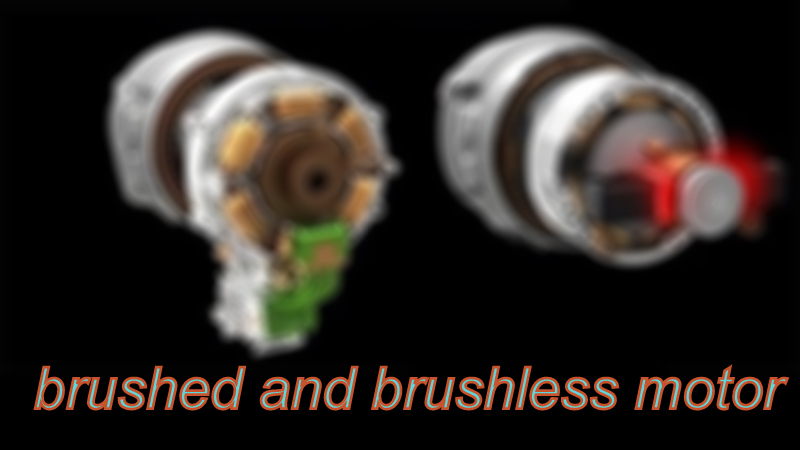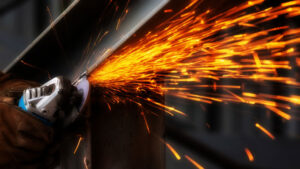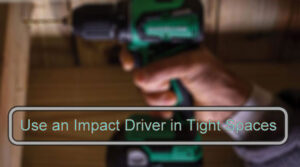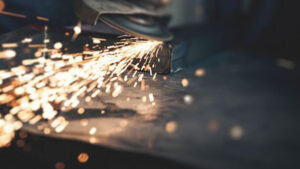A brushed motor is an electric motor that uses brushes to transfer power to the rotating armature or rotor. The brushes make contact with the commutator segments to transfer electrical current to the rotor’s coils, which creates a magnetic field that interacts with the stator’s magnetic field to rotate the rotor. Brushed motors are commonly used in applications that require high starting torque, such as power tools and toys.
A brushless motor, on the other hand, is an electric motor that uses electronic commutation to transfer power to the rotor. The power is switched to the stator windings electronically, eliminating the need for brushes. This makes brushless motors more efficient, reliable, and durable than brushed motors, and they are commonly used in high-performance and precision applications, such as drones, electric vehicles, and industrial equipment.
Importance of understanding the differences
it can help you choose the right motor for your specific application. Each type of motor has its own advantages and disadvantages, and knowing these can help you select the best motor for your needs. For example, if you need a motor with high starting torque, a brushed motor may be the better choice. If you need a motor that is more efficient and reliable, a brushless motor would be the better option.
understanding the differences can help you troubleshoot and maintain the motors. Brushed motors require different maintenance than brushless motors, such as replacing the brushes and cleaning the commutator. Brushless motors require different maintenance, such as keeping the bearings lubricated and checking the electronic components. Knowing these differences can help you maintain the motors properly and prolong their lifespan.
understanding the differences between brushed and brushless motors can help you stay up to date with the latest technology and advancements in electric motors. As technology advances, new types of motors and improvements to existing types are being developed. Staying informed about these advancements can help you stay ahead of the curve and ensure that you are using the most advanced and efficient motors available.
Different Types of Motors
There are various types of motors, including:
- AC motors: These are motors that run on alternating current (AC) and can be either synchronous or asynchronous.
- DC motors: These are motors that run on direct current (DC) and can be either brushed or brushless.
- Stepper motors: These are motors that use electromagnets to move the rotor in small increments and are commonly used in applications such as 3D printers and CNC machines.
- Servo motors: These are motors that use feedback control to precisely control the position, velocity, and acceleration of the rotor and are commonly used in applications such as robotics and automation.
- Linear motors: These are motors that produce motion in a straight line and are commonly used in applications such as magnetic levitation trains and positioning systems.
- Gear motors: These are motors that have an integrated gearbox to increase torque and reduce speed and are commonly used in applications such as electric vehicles and industrial equipment.
- Hydraulic motors: These are motors that use hydraulic pressure to create motion and are commonly used in heavy equipment and vehicles.
- Pneumatic motors: These are motors that use compressed air to create motion and are commonly used in pneumatic tools and equipment.
Each type of motor has its own unique advantages and disadvantages, and the choice of motor will depend on the specific application requirements.
How Brushed Motors Work
Here are the key points on how brushed motors work:
- Brushed motors consist of a stator, a rotor, and brushes.
- The stator is the stationary component of the motor, while the rotor is the rotating component connected to the output shaft.
- The brushes are typically made of carbon and are positioned on opposite sides of a segmented cylindrical device called the commutator, which is attached to the rotor.
- As the rotor spins, the brushes make contact with the commutator segments, transferring electrical current to the coils of wire in the rotor.
- This electrical current creates a magnetic field that interacts with the magnetic field of the stator, causing the rotor to rotate.
- The commutator segments also reverse the direction of the current as the rotor spins, which keeps the magnetic field in the rotor rotating in the same direction.
- Brushed motors are commonly used in applications that require high starting torque, such as power tools and toys, but they are less efficient than other types of motors due to the friction caused by the brushes.
Advantages And Disadvantages of Brushed Motors
| Advantages | Disadvantages |
|---|---|
| High starting torque | Less efficient than brushless motors |
| Relatively simple and inexpensive design | Brushes cause friction and wear, leading to reduced performance and shorter lifespan |
| Easy to control speed with voltage adjustment | Brushes require regular maintenance and replacement |
| Commonly used in power tools and toys | Not suitable for high-performance or precision applications |
| Widely available and easy to find replacement parts | Can generate electromagnetic interference |
Note that the advantages and disadvantages listed may not apply to all brushed motors, as there can be variations in design and quality. However, this table provides a general overview of the pros and cons of brushed motors.
How Brushless Motors Work
Here are the key points on how brushless motors work:
- Brushless motors use electronic commutation instead of brushes to transfer electrical power to the rotor.
- The stator is made up of multiple electromagnets, while the rotor consists of permanent magnets or a magnetic core with coils of wire.
- Electronic sensors detect the position of the rotor and switch the electrical current to the stator coils in a sequence that creates a rotating magnetic field that interacts with the magnetic field of the rotor.
- This interaction causes the rotor to rotate and turn the output shaft.
- The absence of brushes eliminates the friction and wear associated with brushed motors, making brushless motors more efficient, reliable, and durable.
- Brushless motors are commonly used in high-performance and precision applications, such as drones, electric vehicles, and industrial equipment.
- Brushless motors are more expensive and complex than brushed motors, and they require specialized electronic controls and drivers.
- The electronic controls and drivers of brushless motors can be customized to provide more precise speed and torque control than brushed motors.
Advantages and Disadvantages of Brushless Motors
| Advantages | Disadvantages |
|---|---|
| More efficient, reliable, and durable than brushed motors | More expensive and complex than brushed motors |
| High power-to-weight ratio | Require specialized electronic controls and drivers |
| Higher speed range and precision speed control | Electronic components can be more susceptible to damage from voltage spikes or overheating |
| No brushes to cause friction or wear | Not as widely available as brushed motors |
| Quieter operation due to lack of brush noise | Can generate electromagnetic interference |
| Longer lifespan and less maintenance required | Initial setup and programming can be more complex |
| Commonly used in high-performance and precision applications | Lower starting torque than brushed motors |
Note that the advantages and disadvantages listed may not apply to all brushless motors, as there can be variations in design and quality. However, this table provides a general overview of the pros and cons of brushless motors.
Differences between Brushed and Brushless Motors
| Differences | Brushed Motors | Brushless Motors |
|---|---|---|
| Power Transfer | Use brushes to transfer power to the rotor | Use electronic commutation to transfer power to the rotor |
| Efficiency | Less efficient due to friction and wear from brushes | More efficient due to electronic commutation |
| Reliability | Can be less reliable due to wear from brushes | More reliable due to lack of brushes |
| Lifespan | Shorter lifespan due to wear from brushes | Longer lifespan due to lack of brushes |
| Maintenance | Require regular maintenance and brush replacement | Require less maintenance and no brush replacement |
| Control | Speed control is simpler and voltage-based | Speed control is more precise and can be programmed |
| Noise | Can generate more noise due to brush operation | Run quieter due to lack of brushes |
| Starting Torque | High starting torque | Lower starting torque than brushed motors |
| Cost | Lower cost than brushless motors | Higher cost than brushed motors |
| Applications | Commonly used in power tools and toys | Commonly used in high-performance and precision applications, such as drones and electric vehicles |
Note that the differences listed may not apply to all brushed and brushless motors, as there can be variations in design and quality. However, this table provides a general overview of the key differences between brushed and brushless motors.
Typical Uses of Brushed Motors
Brushed motors are commonly used in a variety of applications that require high starting torque, such as:
- Power tools – drills, saws, sanders, and other handheld power tools often use brushed motors due to their ability to deliver high torque at low speeds.
- Toys – many battery-powered toys, such as remote-controlled cars and boats, use brushed motors for their simplicity and affordability.
- Appliances – some household appliances, such as blenders, mixers, and vacuum cleaners, may use brushed motors due to their ability to deliver high torque at low speeds.
- Automotive applications – some older vehicles use brushed motors for windshield wipers, window regulators, and other applications.
- Industrial equipment – some industrial equipment, such as conveyor belts, packaging machines, and elevators, may use brushed motors for their high starting torque and simplicity.
Overall, brushed motors are commonly used in applications where high starting torque is required and efficiency is less of a concern.
Typical Uses of Brushless Motors
Brushless motors are commonly used in a variety of applications that require high performance and efficiency, including:
- Drones – brushless motors are commonly used in drones due to their high power-to-weight ratio, precision speed control, and efficient operation.
- Electric vehicles – electric cars, bikes, and scooters often use brushless motors due to their efficiency, high torque, and low maintenance requirements.
- Industrial equipment – brushless motors are often used in industrial equipment, such as pumps, compressors, and HVAC systems, for their efficiency and reliability.
- Robotics – brushless motors are often used in robotics applications due to their precision control and low noise operation.
- Medical equipment – some medical devices, such as surgical tools and prosthetics, may use brushless motors for their high performance and precision control.
Overall, brushless motors are commonly used in applications where high performance, efficiency, and precision are important.
Final Words
In summary, the main difference between brushed and brushless motors lies in the method of power transfer. Brushed motors use brushes to transfer power, while brushless motors use electronic commutation. As a result, brushless motors are generally more efficient, reliable, and durable than brushed motors. They also offer more precise speed and torque control, but are typically more expensive and complex to manufacture and require specialized electronic controls and drivers.
Brushed motors, on the other hand, are simpler and less expensive to manufacture, and are commonly used in applications that require high starting torque. However, they are less efficient and have a shorter lifespan due to wear from brushes. Understanding the differences between these two types of motors is important for choosing the right motor for a specific application, troubleshooting and maintaining the motor, and staying up to date with the latest technology and advancements in electric motors.
FAQs
What is the lifespan of a brushed motor?
The lifespan of a brushed motor can vary depending on factors such as usage, load, and maintenance. However, brushed motors typically have a shorter lifespan than brushless motors due to the wear and tear of the brushes. With proper maintenance and care, a brushed motor can last anywhere from several hundred to several thousand hours of operation.
How do I maintain my brushless motor?
To maintain a brushless motor, you should keep it clean and free of debris, avoid overloading it, and ensure that the electronic controls and drivers are functioning properly. It’s also important to periodically inspect the motor for any signs of wear or damage and replace any faulty components as necessary.
Can I replace a brushed motor with a brushless motor?
In some cases, it may be possible to replace a brushed motor with a brushless motor, but this will depend on the specific application and requirements. Brushless motors typically require specialized electronic controls and drivers, and may not be suitable for all applications.
How do I determine if I need a brushed or brushless motor for my application?
The choice between a brushed or brushless motor will depend on factors such as the required torque, speed, efficiency, and precision, as well as the operating environment and budget. Generally, brushed motors are suitable for applications that require high starting torque and low cost, while brushless motors are more suitable for applications that require high performance, efficiency, and precision.
What are some common applications of brushless motors in industry?
Some common applications of brushless motors in industry include drones, electric vehicles, industrial equipment, robotics, and medical devices. Brushless motors are often used in applications that require high performance, efficiency, and precision.
Can I use a brushed motor in a high-temperature environment?
Brushed motors can typically operate in a range of temperatures, but high temperatures can affect the performance and lifespan of the motor. If the operating environment is consistently high-temperature, it may be more appropriate to use a brushless motor, which is generally more efficient and reliable in high-temperature environments.




